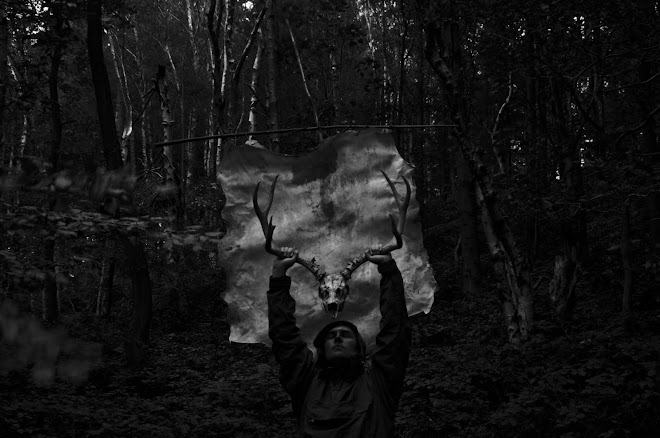


On Sunday 28th September 2008 I revisited the woods I knew as a child. Bordered on the west by the river Wear, to the north by the East Coast Mainline and to the east by the village of Croxdale and the A167 these woods are a mixture of spruce plantations on old colliery pit heaps and stands of ash and sycamore along the narrow beck valleys. As is often the case with woodland in Britain it is a mean and hemmed-in kind of wood, squeezed on all sides by agriculture and settlements and showing the signs of abuse that are so common; empty beer tins stuck on bushes for kids to shoot air guns, piles of tyres tipped over fences by farmers too lazy to dispose of them properly - the casual desecration of the modern word.
I entered the woods along the track from Sunderland Bridge – the opposite way that I used as a child but easier to access to the areas I wanted to look at. I passed the sewage works and piles of fly-tipped garden waste, walked under the large red-brick viaduct that carries the inter-city trains and on to the river, signs of the recent flooding showing in the bent Himalayan Balsam and debris caught high in the branches of the willows and hazels that hem the bank.
As I left the path and took to the woods a grey squirrel immediately started alarming from an oak tree 10 meters in front. I stood exasperated as it chirped and squeaked, violently shaking its tail. I can not remember greys in these woods 30 years ago, in fact I can not remember seeing any grey squirrels in this part of the Wear Valley. As recently as the late 80s red squirrels were present in Croxdale woods and also in the woodland extending from High Butterby to Shincliffe but now every footstep seemed to scatter another grey into the trees, their noisy ascent making it less likely that any other wildlife in the wood would stay around.
I climbed to the top of the pit heap, the black spoil from Durham’s mining heritage bound together by spruce and silver birch planted in the 1950s and 1960s. The steep western side of the heap runs down to the river and from the long ridge at the summit the village of Croxdale can be seen across the fields to the east. On another visit earlier this year I had seen Roe deer grazing in the secluded margins where the woods met the fields so I began to move carefully and quietly in that direction only to see a brown Labrador trot towards me followed by its owner. If any deer had been in this part of the wood they would be long gone by now.
I descended the pit heap at its steep southern end and dropped down into the beck valley, a narrow strip of woodland full of ash, hazel and holly. The beck had been scoured by the heavy rain at the beginning of the month but even so it looked dull and lifeless and I stood on its banks. I remembered an afternoon visit to this spot as a boy when my Dad and I had caught so many fish that the bucket had been unable to hold them and I watched as they swam round and round in their own shoal. Now the beck has no fish or fresh water shrimps, no holes for bank voles amongst the roots of hazels.
At the bend in the beck where the old cracked willow lies flat on the woodland floor a new steel bridge with massive concrete foundations has replaced the old wooden footbridge. I crossed the beck and took the trail into Coldstream Wood, more spruce plantation left to run wild although not as mature as the plantations on the pit heap. The path had been churned up by horses and mountain bikes and the wood was quiet and still, not even a bird call accompanied me as I walked up the trail. At the end of the wood I leant on the gate and looked across the fields to Coldstream Farm – now much larger and posher than I recalled and as I looked a mountain-biker appeared in the distance. Not wanting to be around when he arrived I took a small game trail to my right, planning to skirt along the outer edge of the wood closest to the river before rejoining the trail back at the bridge.
Top: Satellite image from Google Earth showing scat find sites. OS Explorer 305 Bishop Auckland, ref 260370
Middle: Sunlight on the western slope of the pit heap
Bottom: Coldstream Wood seen from the banks of the river Wear

No comments:
Post a Comment